Abstract
A 13-year assessment has been made of the effectiveness of a monthly drug treatment programme for the control of tapeworms in dogs in order to prevent hydatidosis (Echinococcus granulosus) and cysticercosis (Taenia hydatigena and T. ovis) in sheep. The age-specific prevalence of T. hydatigena in lambs was used as the principal indicator. The trial was carried out in the Styx Valley of the Maniototo Plain in the South Island of New Zealand.
Over an 8-year period dogs were treated monthly with bunamidine hydrochloride at about 25 mg/kg with little effect on the prevalence of T. hydatigena in lambs. The addition of niclosamide at 50 mg/kg for 1 year also had little effect. Eggs appeared to survive from one season to the next. Those shed prior to the lamb-rearing season gave rise to endemic-type patterns; whereas patent infections occurring during this period rapidly gave rise to an epidemic-type pattern or a ”cysticercosis storm”. In this 9-year period there were 16 ”cysticercosis storms” and all susceptible lambs were infected. These storms did not necessarily give rise to a similar prevalence on neighbouring farms, but may have contributed to the overall infective pattern. A similar situation occurred in the first year that nitroscanate at 100 mg/kg was introduced. During this 10-year period, arecoline surveillance of the dog population was undertaken in the remainder of the county and many dogs were found to harbour tapeworms. Both resident and introduced dogs may have contributed to the infective patterns in the Styx Valley.
Treatment with nitroscanate was continued monthly in the Styx Valley and niclosamide was used in the remainder of the County for a further 3 years. There was a marked reduction in the age-specific prevalence and lambs on many farms were free from T. hydatigena at slaughter. However, one ”breakdown” occurred and this was almost certainly autochthonous.
Comparisons with an earlier period when arecoline surveillance was used in the Styx Valley, indicate that the present evidence favours a drug-orientated treatment programme of the definitive host for the control of cysticercosis. However, ”breakdowns” caused by either autochthonous or itinerant sources have profound effects, since they involve all susceptible age-cohorts including those that have never been infected and those that have lost the immunity induced by an earlier infection.
Full text
PDF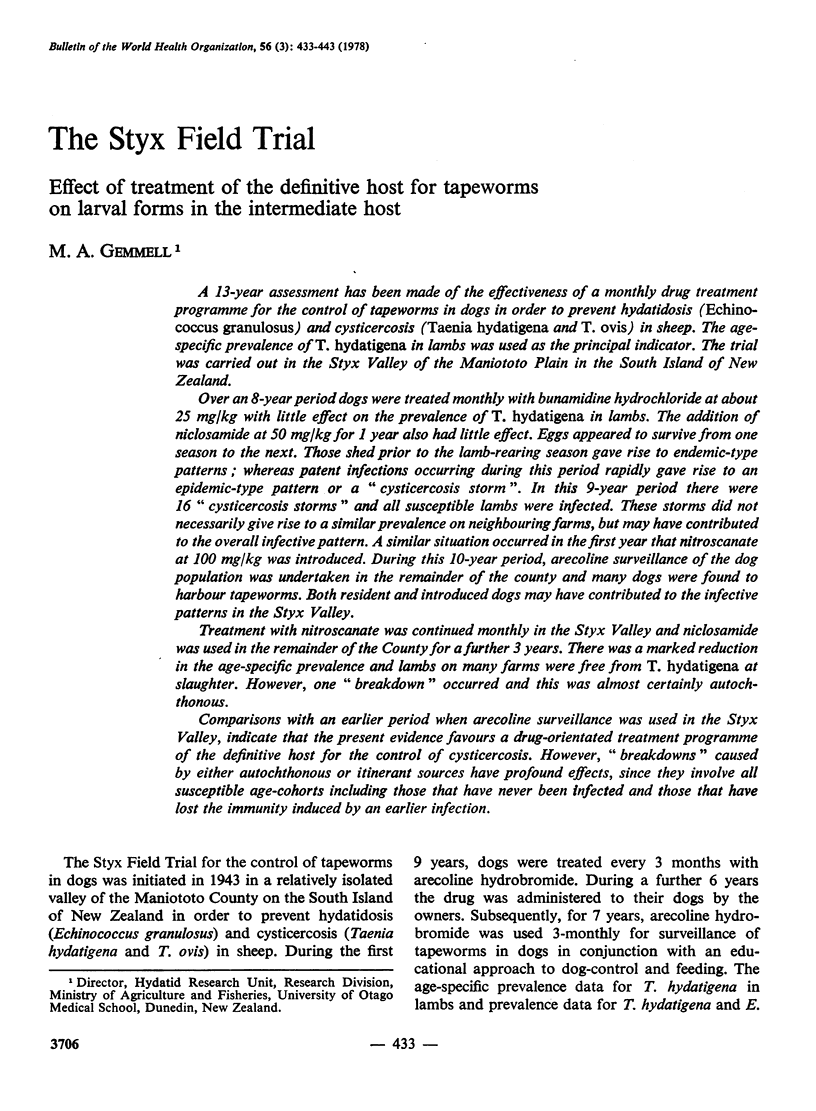
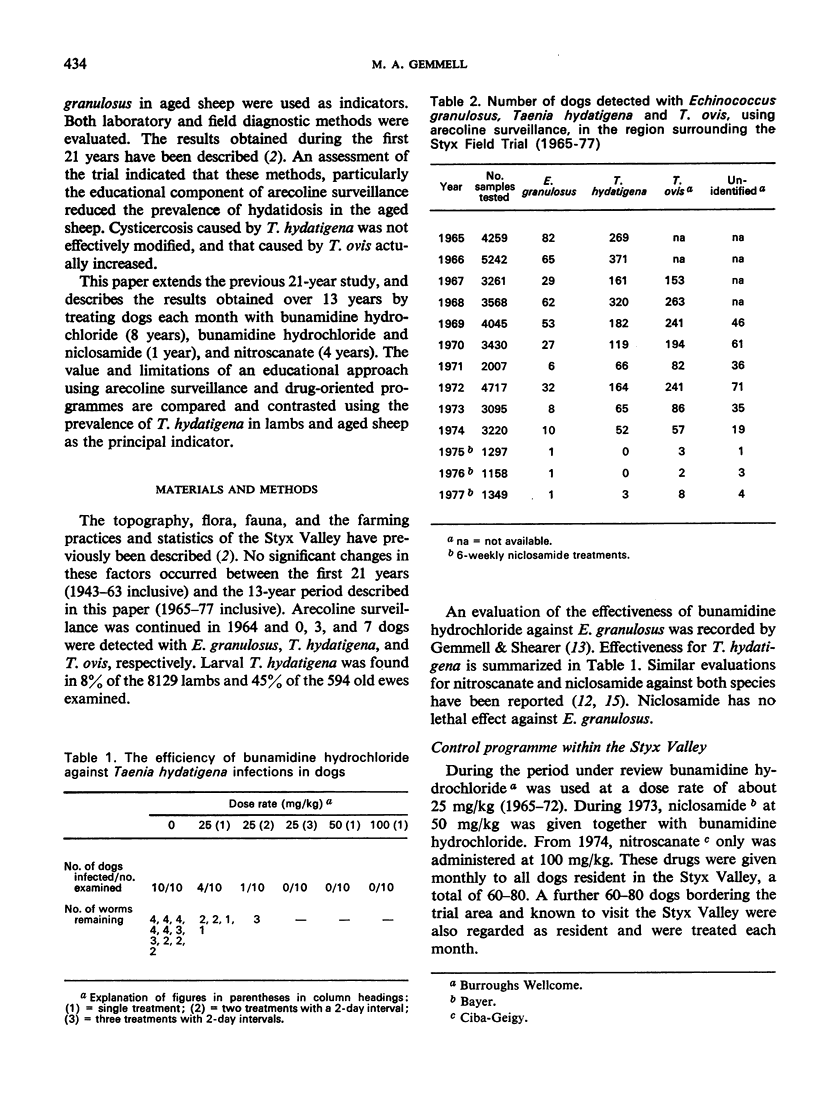
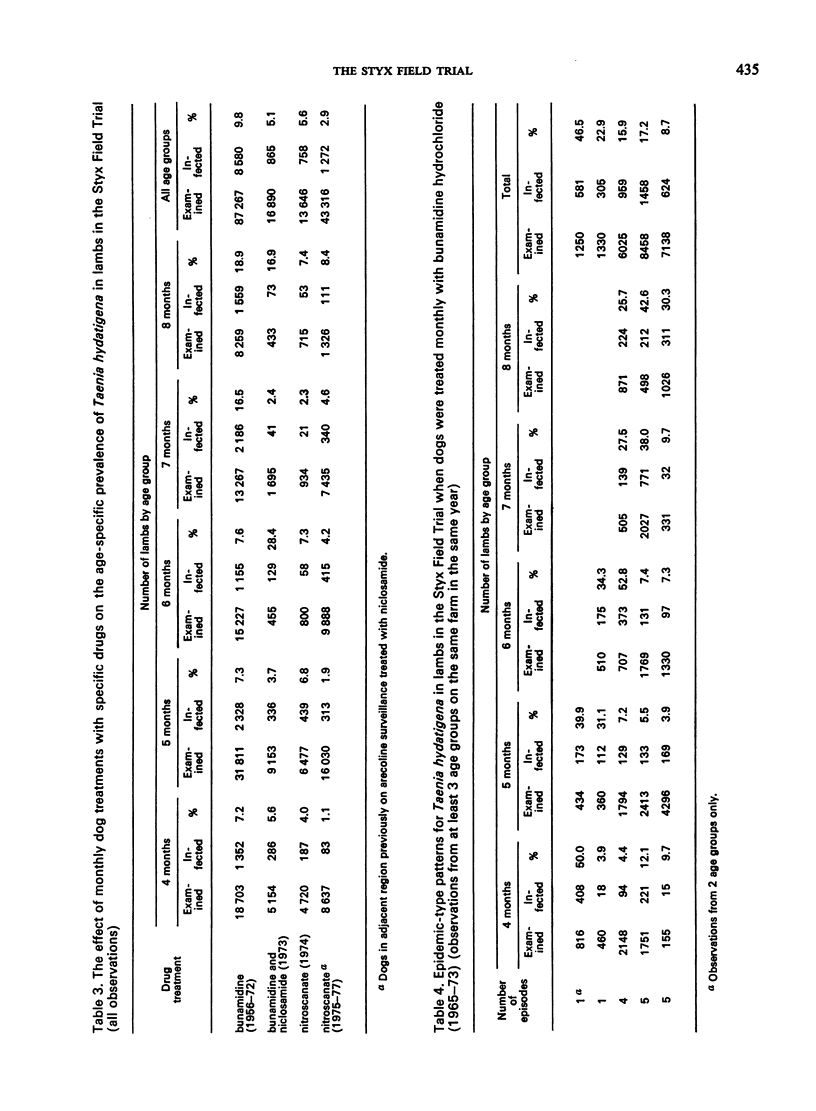

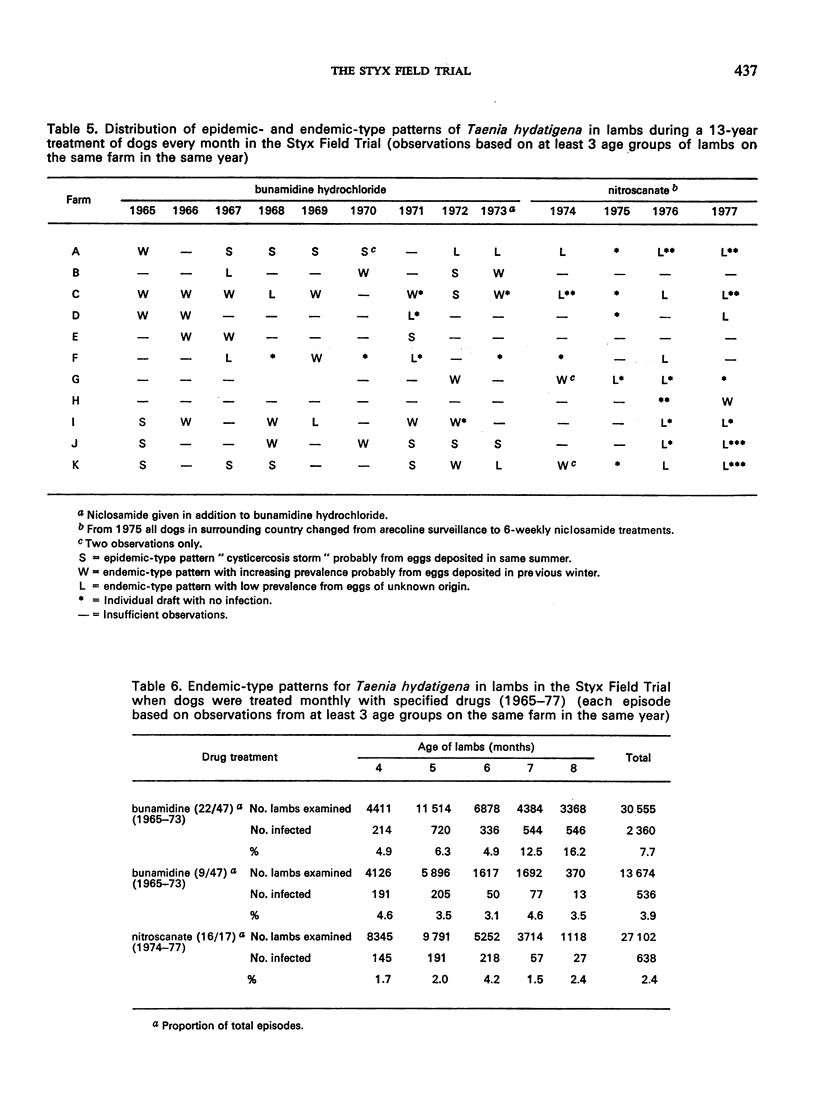

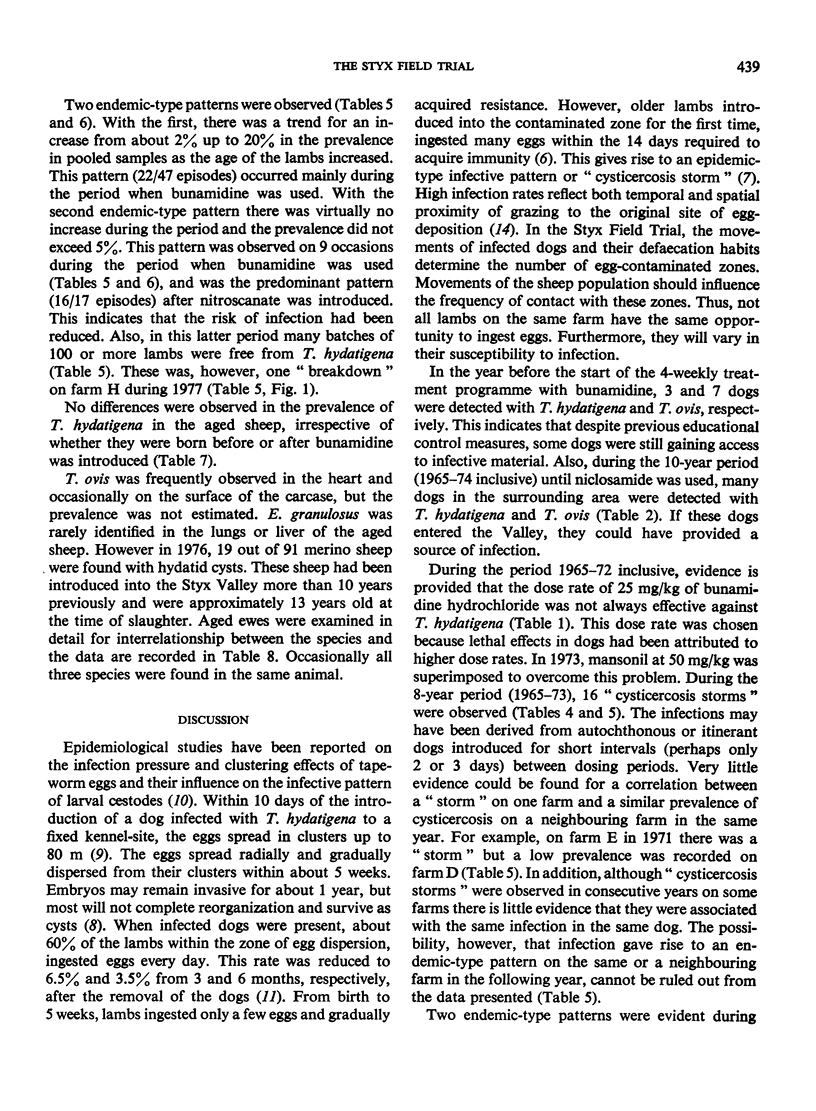


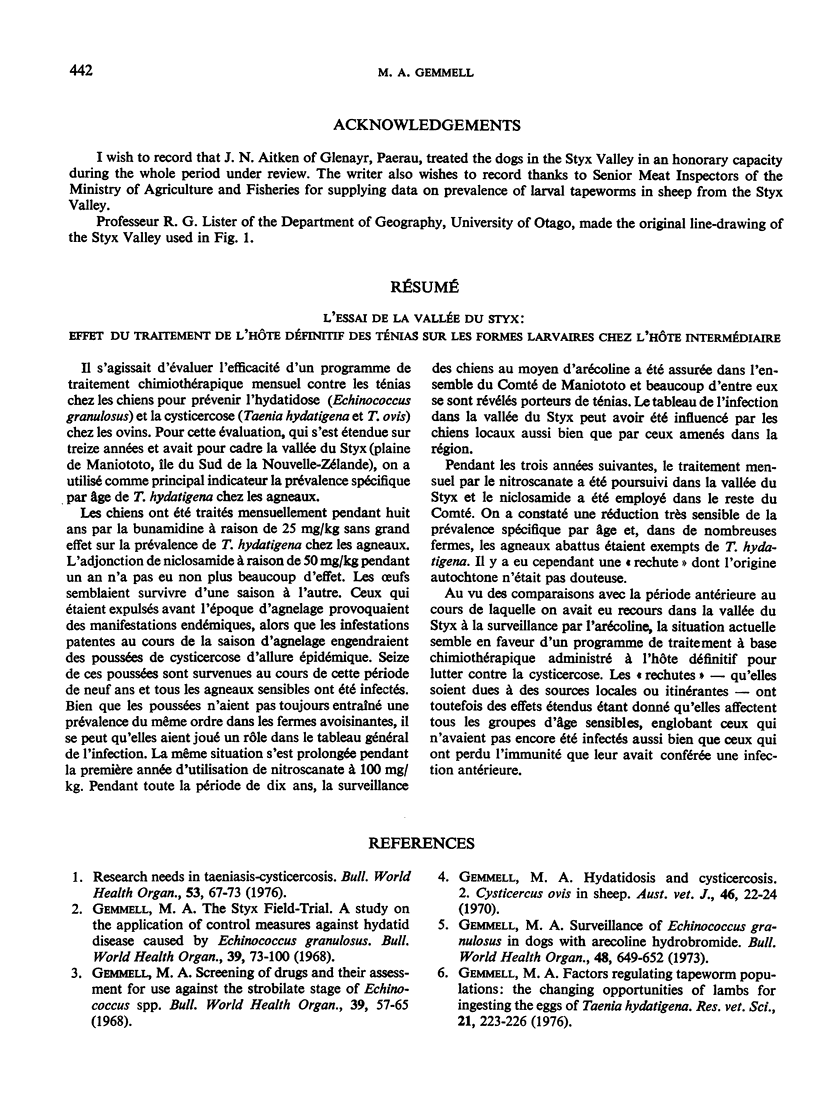
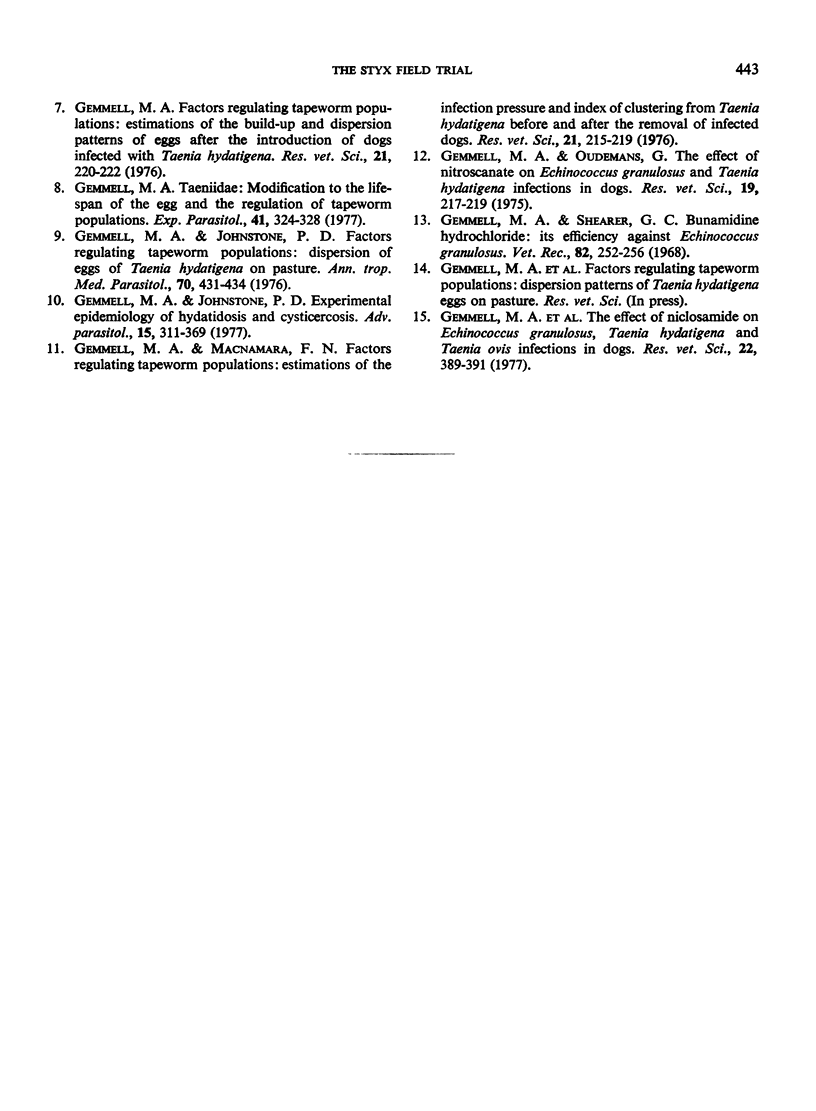
Selected References
These references are in PubMed. This may not be the complete list of references from this article.
- Gemmell M. A. Factors regulating tapeworm populations: the changing opportunities of lambs for ingesting the eggs of Taenia hydatigena. Res Vet Sci. 1976 Sep;21(2):223–226. [PubMed] [Google Scholar]
- Gemmell M. A. Hydatidosis and cysticercosis. 2. Distribution of Cysticercus ovis in sheep. Aust Vet J. 1970 Jan;46(1):22–24. doi: 10.1111/j.1751-0813.1970.tb14877.x. [DOI] [PubMed] [Google Scholar]
- Gemmell M. A., Johnstone P. D. Experimental epidemiology of hydatidosis and cysticercosis. Adv Parasitol. 1977;15:311–369. doi: 10.1016/s0065-308x(08)60531-x. [DOI] [PubMed] [Google Scholar]
- Gemmell M. A., Macnamara F. N. Factors regulating tapeworm populations: estimations of the infection pressure and index of clustering from Taenia hydatigena before and after the removal of infected dogs. Res Vet Sci. 1976 Sep;21(2):215–219. [PubMed] [Google Scholar]
- Gemmell M. A., Oudemans G. The effect of nitroscanate on Echinococcus granulosus and Taenia hydatigena infections in dogs. Res Vet Sci. 1975 Sep;19(2):217–219. [PubMed] [Google Scholar]
- Gemmell M. A. Screening of drugs and their assessment for use against the strobilate stage of Echinococcus. Bull World Health Organ. 1968;39(1):57–65. [PMC free article] [PubMed] [Google Scholar]
- Gemmell M. A. Surveillance of Echinococcus granulosus in dogs with arecoline hydrobromide. Bull World Health Organ. 1973 Jun;48(6):649–652. [PMC free article] [PubMed] [Google Scholar]
- Gemmell M. A. The Styx field-trial. A study on the application of control measures against hydatid disease caused by Echinococcus granulosus. Bull World Health Organ. 1968;39(1):73–100. [PMC free article] [PubMed] [Google Scholar]


